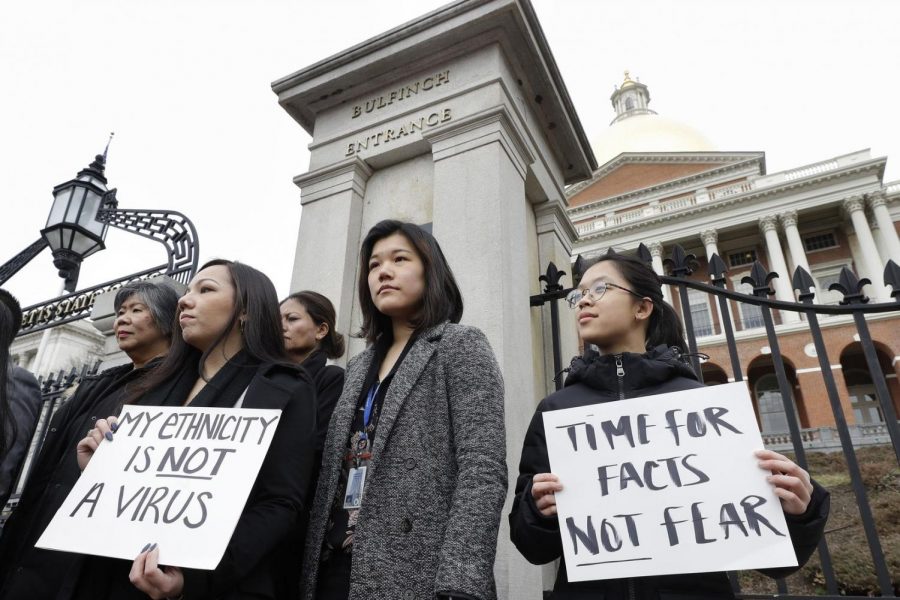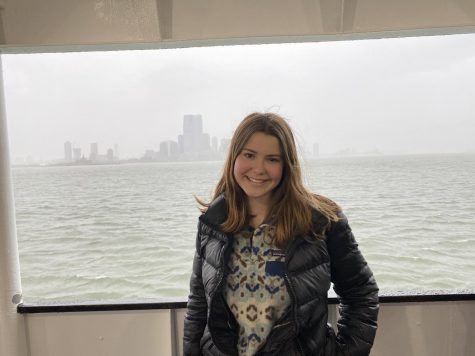Outbreak of Anti-Asian Violence: Origins, Impacts, and Action
Anti-Asian violence increases, rooted in historically racist policies of the US for centuries.
March 7, 2021
The stabbing of an Asian man in New York City’s Chinatown on February 25th sparked community demand for a hate crime charge and ignited a fear of a resurgence in the recent wave of anti-Asian crime.
Since the start of the pandemic last spring, Asians in America have been subject to increased rates of violence. The New York Police Department reported anti-Asian hate crimes rose 1900% in 2020. Reports of these crimes are widespread, from 47 states and the District of Columbia. Stop AAPI Hate, a national coalition documenting anti-Asian bigotry since the beginning of the pandemic, received 2,808 reports of anti-Asian discrimination between March 19 and December 31, 2020. Physical assaults comprised roughly 9% of these incidents, coughing and spitting totaled 6%, verbal harassment constituted 70%, and shunning or avoidance was at 21%.
In the Bay Area, especially in San Francisco and Oakland’s Chinatowns, there have been upwards of 20 unprovoked violent attacks and robberies reported since January, including an attack in San Francisco that left an 84-year-old Thai gentleman Vicha Ratanapakdee dead and a January 31 attack in Oakland that injured three.
Although former President Donald Trump’s racist rhetoric, calling COVID-19 the “China virus,” or “Kung flu,” ignited prejudice against Asians as disease-carriers and underlies this spike in anti-Asian violence, a deeper analysis reveals that these attacks are part of a long history of violence and discrimination against Asians in America. This dates back to the 19th and 20th centuries.
Winston Tseng, a research scientist and lecturer from UC Berkeley, explains that, because Asian immigrants have historically been seen by the White establishment as threats to White American jobs, it portrayed Asians as disease carriers who needed to be contained to gain support for racist anti-immigration policies. Under the guise of Asian immigration being a health concern, the US restricted Asian immigrants’ physical and economic freedom. The 1882 Chinese Exclusion Act, the first immigration law to exclude an entire ethnic group, was established to prevent Chinese laborers from immigrating to the United States. Under this policy, from 1910 to 1940, the immigration station at Angel Island detained 225,000 Chinese and Japanese immigrants, in part for “health monitoring,” under oppressive conditions for as long as six months. Additionally, institutionalized government policies of elevated tax burdens, education and housing segregation, and land ownership restrictions of Asian populations furthered discrimination and scapegoating. The most dramatic instance was the forced relocation and incarceration in concentration camps of at least 120,000 Japanese people during World War II.
However, the systematic marginalization of Asians in America is not just a part of history. There are current Bay Area residents who grew up working in San Francisco Chinatown sweatshops resulting from a century of structural discrimination. In 2018, the US passed a law to restrict Chinese student and scholar immigration to America. According to Berkeley professor John A. Powell, this law arises from scapegoating Asian international students for larger debates about trade and preserving White American dominance.
This history and its extension into current times place a significant burden on the Asian population in the US. Because of the continuation of blaming Asians for disease, and increased racialized violence since the start of the pandemic, there has been a higher increase (39%) among Asian people accessing the Mental Health America anxiety screening test than among the general population (22%).
On February 2nd, President Joe Biden signed an executive order denouncing anti-Asian discrimination. Locally, Alameda County District Attorney Nancy O’Malley created a special response unit focused on anti-Asian crimes, particularly against elders. But it takes time to shift the climate of fear and division that is settling into the Bay Area. In the meantime, as police may need to play some role, concern about their involvement due to police brutality leads some activists to call instead for unity and collaboration to change the culture of white supremacy that houses hate-based assault.
Resources on allyship and fighting anti-Asian discrimination can be found at this link: https://news.airbnb.com/resources-for-allyship-and-fighting-anti-asian-discrimination/
A go fund me for Vicha Ratanapakdee’s family: https://www.gofundme.com/f/84yearold-killed-in-san-francisco
A go fund me for San Francisco based Eric Lawson working to create protection for seniors: https://www.gofundme.com/f/help-me-get-personal-alarms-to-those-who-need-them?utm_source=customer&utm_medium=email&utm_campaign=p_cf+share-flow-1


